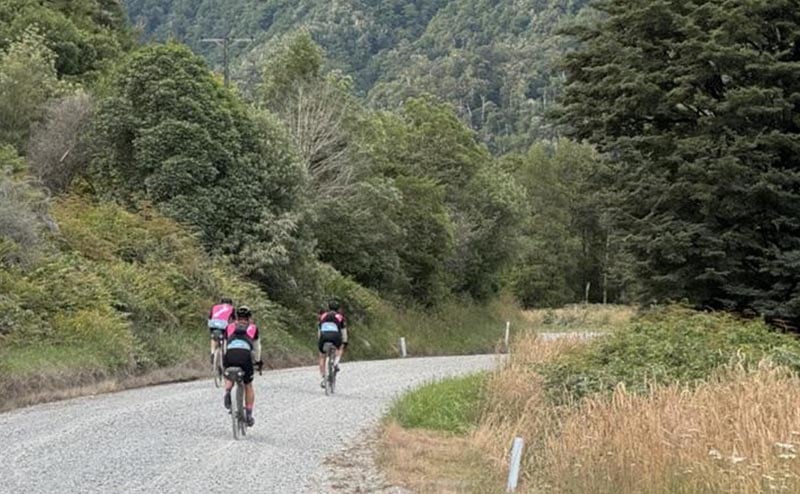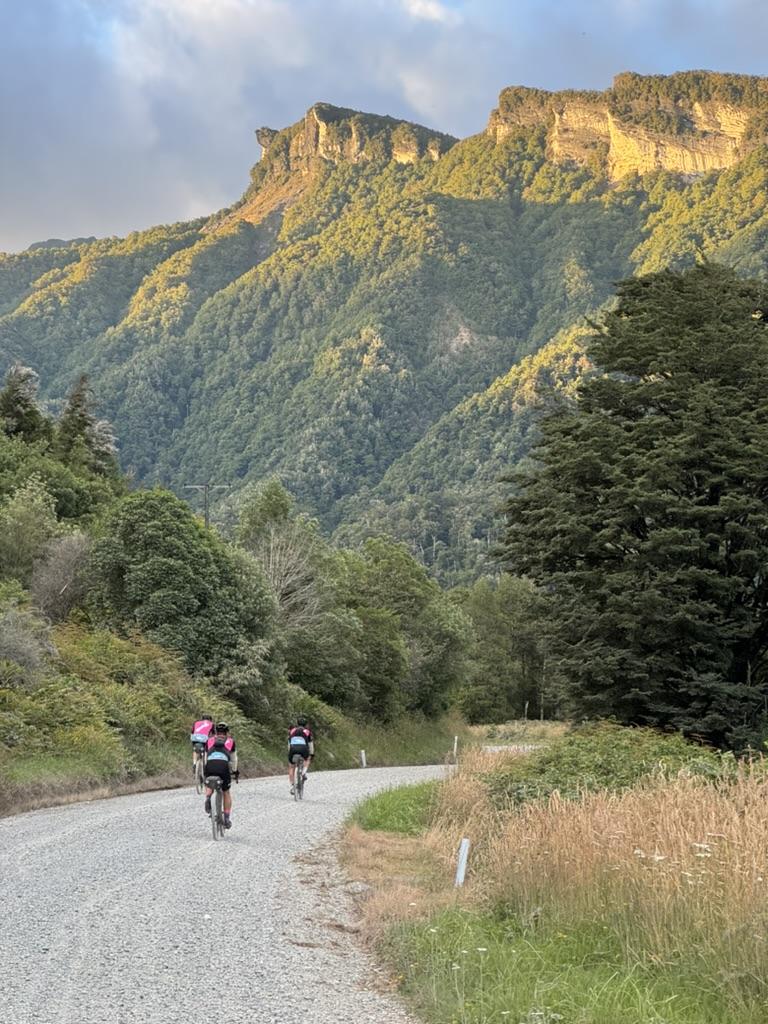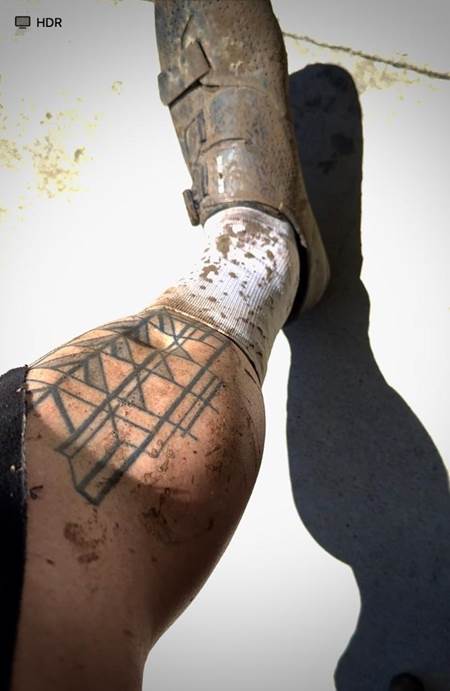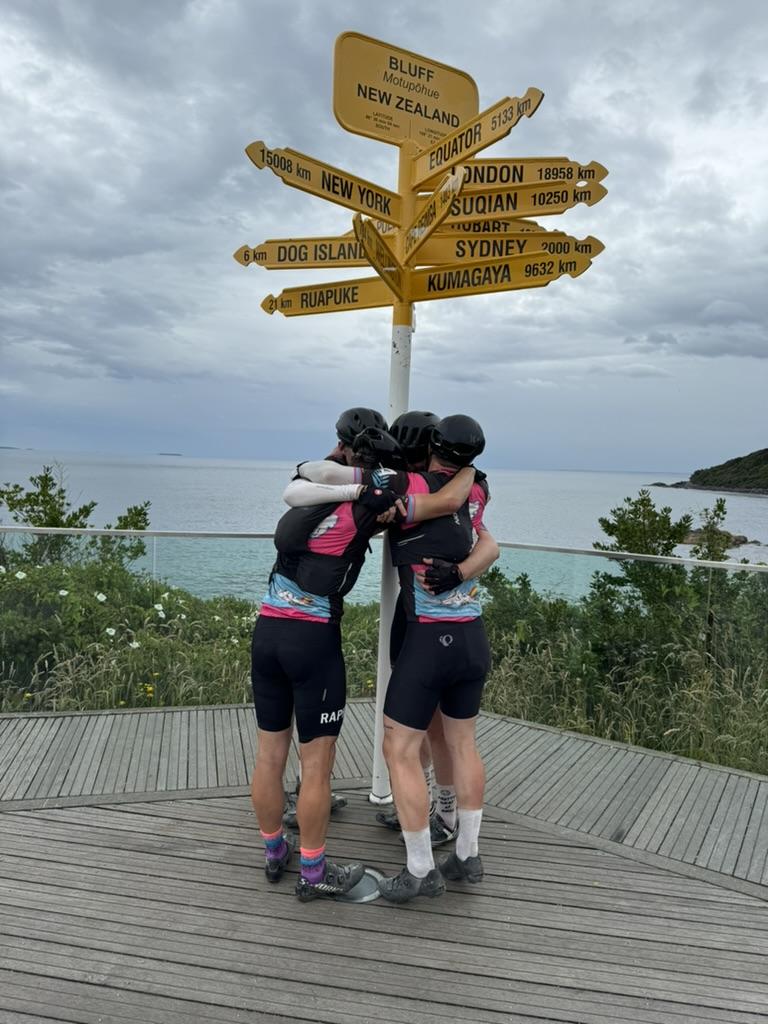
When the Tables are Turned
David Young, MD
ACEP WM Section Chair
 Enjoying scenic vistas and a well-deserved downhill. (David Young)
Enjoying scenic vistas and a well-deserved downhill. (David Young)
As I finish my time as Chair of the ACEP Wilderness Medicine Section, I have been reflecting on my work as a wilderness medicine physician. The world of WM has given me countless opportunities to learn how to care for patients in austere conditions. As it turns out, sometimes this skill set can even be helpful for myself.
In January this year, I embarked on an adventure with three friends to bike the length of New Zealand on gravel bikes. This 3000 km journey from the tip of the north island to the bottom of the South Island brought us through amazing vistas, hidden forests, and parts of the nation seldom seen by the casual traveler. Given our work commitments, our timeline was tight with little to no flexibility. Our goal was to complete the entire Tour Aotearoa in 20 days, covering about 150 km per day with no rest days.
After a long journey, we arrived at the northernmost point, Cape Reinga, ready to start our ride. As the miles passed and the days continued, my body tried to keep up with the demands. After a couple days, my left knee began to hurt, but I powered through as I had been used to aches and pains similar to this. The following day, my knee pain worsened and included my popliteal fossa. I began to develop significant pitting edema which I had never experienced before.
I recalled that I just flew from Michigan to New Zealand, then jumped immediately into the back of a cramped van for 8 hours before starting the ride the following morning. Is it possible I could have developed a DVT during the travels? Is it simply severe patellofemoral syndrome causing the edema? Either way, it’s probably not wise to continue, but a vascular issue was more concerning.
 Venous thromboembolism or overuse injury? (David Young)
Venous thromboembolism or overuse injury? (David Young)
At the end of a shorter day, we arrived in a small town with daylight to spare. I felt I needed to address my leg pain and swelling, and this was the perfect time. So, for the first time in my life, I checked in as a patient in the Emergency Department.
The wait was long, but I explained the ambitious tour, time constraints, and health concern to a kind triage nurse. After several hours, I was roomed and she wheeled an ultrasound into my triage room and left it there. To my surprise, it was a dusty old Sonosite I had used during my own training and to train many others in global health projects across Africa. I was happy to see this old friend. The nurse knew that the wait to see the physician on duty would be considerably longer, so I performed my own DVT ultrasound. When I saw that there was no evidence of a clot, I expressed my gratitude to the ED team, and left with the reassurance I needed to continue on the tour. Knowing I simply had a musculoskeletal issue was a relief. I also had developed many strategies of treating similar injuries through years of serving as a race medicine physician in remote areas.
Eventually, with some taping and icing, changing biomechanics on the bike, and a slow/steady pace, my knee improved, and the swelling dissipated. In the end, all four of us were able to overcome our own challenges and complete the entire tour as a team. You can read more about our adventure or see our route, please check out our expedition blog.

Team celebrating expedition end at the southern tip of New Zealand. (David Young)

